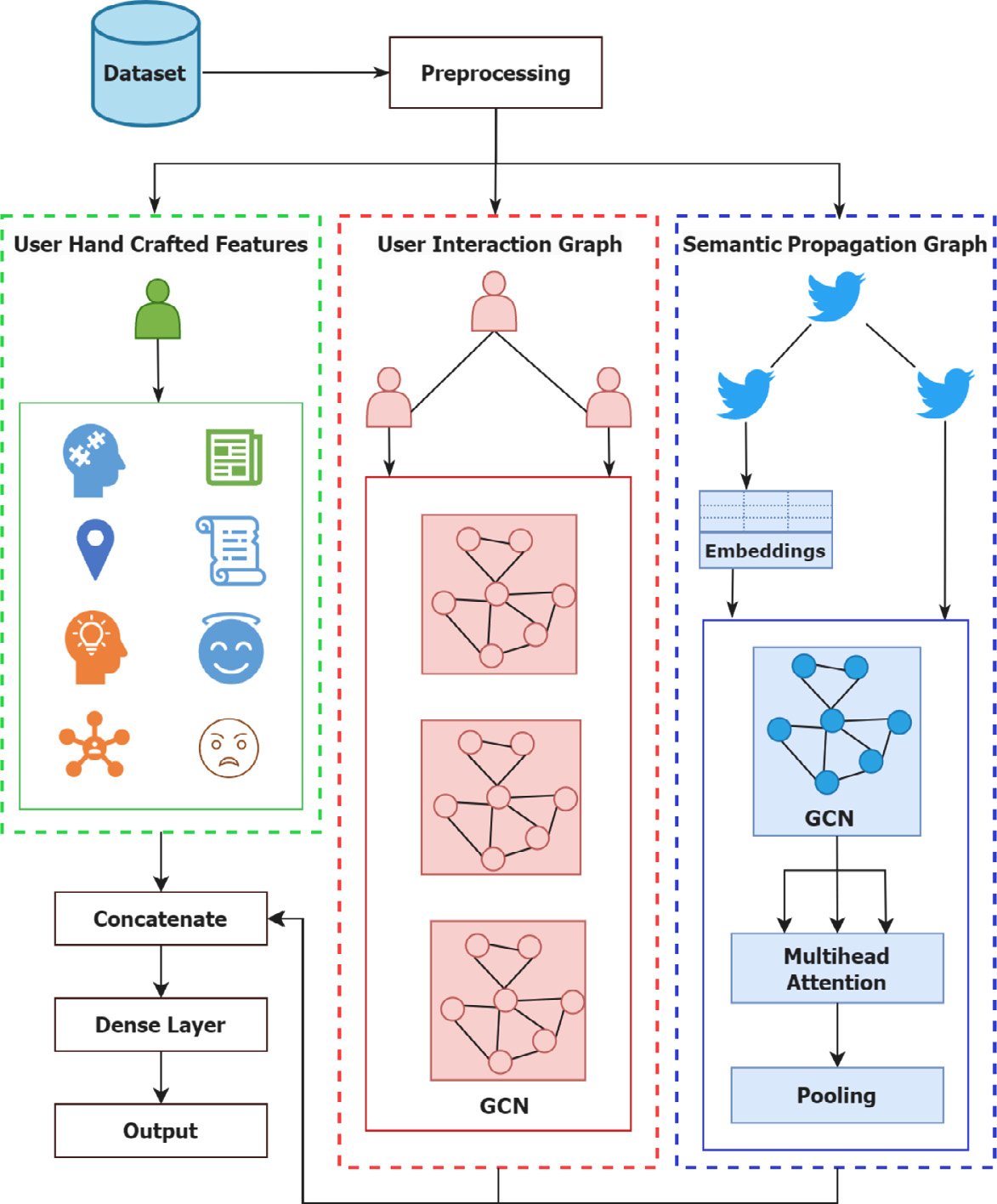Abstract
Most existing methods for detecting fraudulent news or other forms of disinformation primarily rely on user profiling or content analysis, determining whether a given article aligns with a user’s stylistic or content-related preferences. This research departs from conventional approaches by concentrating not only on the characteristics of shared content but also on user interactions and the resultant topologies of content propagation trees. In our study, we have introduced a deep learning model based on Graph Convolutional Neural Networks (GCNN) and enhanced with multi-head attention mechanisms. This model leverages a wide range of psycholinguistic attributes extracted from users’ posts, including sentiment, emotional content, linguistic features, personality traits, readability, and communication style. We further enrich these attributes with BERT embeddings to improve textual representation. Our research framework involves creating two distinct graph networks: the user interaction graph and the semantic propagation graph. These graphical representations are essential for visualizing dynamic interactions and patterns of information dissemination among users. For each user, we generate a set of carefully crafted features that capture their unique characteristics and behaviors. These user-specific features are then integrated into the User Interaction Graph, enabling a more nuanced understanding and representation of user interactions within our proposed model. The proposed framework has demonstrated superior performance on benchmark datasets, achieving accuracies and precisions of 91.07% and 91.24% on the FakeNewsNet dataset, and 94.20% and 94.92% on the FibVid dataset, respectively. The results obtained from the experimental evaluation have also revealed the effect of various parameters significant to profile disinformers, signifying a substantial improvement in the field of fake news detection and profiling.
Full Paper: https://doi.org/10.1016/j.eswa.2024.124650
